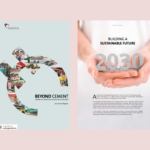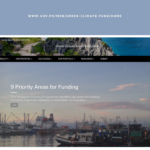Содержание
- Engagement Models
- Phoenix: Creating An Umbrella App With Your Site And Haskrockets Tilex
- Engagement Models We Offer As A Web And Mobile App Development Company
- Effective Project Organization
- Advantages Of Fixed Price Model
- Flexible And Client
- Disadvantages Of Fixed Price Model
- Fixed Price Project Definition
These two models are well suited for companies that provide SaaS offerings. They specify how the vendor will help with the implementation of the SaaS offering. The Milestone based model is typically well-suited for process-oriented organizational setups. Deadlines are approximate, and a variety of factors may influence the length of development — a danger to delay the project.
Diverse niche experiences made our team proficient in applying suitable toolkits and software development technologies to cover your specific objectives. We offer efficient partnership terms for any project irrespective of the contribution needed. We take on the cases at any stage and support them until successfully launched.
T&M is a great pick for long term business partnerships focused on constant development and end-user satisfaction. Everything is laid out in the requirements and, provided they are clear and detailed, you know exactly what you’re going to get at the end of the project. You and your vendor agree on the exact time frame of the project. It is the vendor’s responsibility to keep to the specified budget and time frame.
This pricing model may be a good choice for organizations with very clear requirements and strict or limited budgets who don’t require much flexibility. Depending on the amount of work, the company calculates custom software development services hours required to complete all the tasks. Milestone contract includes regular payments for accomplished milestones. As a rule, a customer pays, at fixed points, when the required tasks completed. Payment is determined by time spent on development and amount of work.
Engagement Models
We discussed in detail about each type which included the pros and cons, cost, and the type of projects which are best suited for that model. They monitor the performance and ensure that your team has the right mix of developers. They will report to your company and will also comply with your corporate policies & culture, development practices and methodologies, workflow tools, management style, and technical platform.
It helps you shape up project requirements with the help of industry experts, and you can deal with unforeseen factors. It’s ideal for projects where you can change requirements without having too much knowledge about what needs to be done. A business process known as Knowledge Transfer, ensures that all project information is properly and efficiently shared among project member including Scrum Masters and Technical Managers.
You are welcome to save our cheatsheet, it will help you stay on the right track. As your trust in the contractor grows, you can transition to a more flexible model based on rough estimations . Using this model, we produce approximate estimates that don’t require that much time investment when compared to the Fixed Price model. The model is perfect for long-term cooperation on complex and extensive projects.
High-fidelity designs will be presented in a mockup form for the client to review and discuss. The visuals will illustrate the features that will be placed on the page and visualise how all interface elements will work and look like together. Once the specifications are agreed on, we move to the design stage. The product is tested at every stage to make sure it meets the requirements and that it is stable and robust. This is an engagement model where the vendor manages the service for you in an end-to-end and holistic manner.
The Time and Material model works on a completely different principle than the Fixed-Price model. In Time and Material, rather than pay a fixed sum right at the start, you pay the software team for the hours of work needed to finish a given project and for all of the materials they use. This type of cooperation model is useful when you cannot accurately estimate how much the project will cost or how long it will take to complete, so there’s no set price or rigid deadlines for the team. The time and materials model will usually involve the payment for the effort and time spent on the development which is the actual time spent by using the functionalities of the project planned. It is considered to be flexible, convenient, and even able to adapt to any new changes.
Any change in the scope would cause a change in the total cost and this change would be compensated by the service provider’s end. With this model, you can determine the expenses of 1-3 months before the start. This model requires clear deadlines which assist the developers in completing the project on time. I will also guide you to select the right model for your project. So, before we dive in, let’s see what exactly are the engagement models. In this article, I will discuss different engagement models along with their advantages and disadvantages.
The members of your dedicated team might come from different corners of the world serving different technical needs. There’s a possibility of a difference of opinion if the project has both in-house developers and the dedicated ones. You have the total control over the resources assigned for the development of your project. For long-term IT projects with original goals and rapidly changing scopes. This model is of low risk, that is it has a flexible and negotiable budget which is a win-win game for both the parties.
Phoenix: Creating An Umbrella App With Your Site And Haskrockets Tilex
From this point onwards, all of these are set in stone and not subject to change during the development process. Engagement models are different modes of cooperation that you have to choose before committing to a healthy working relationship. Today I’ll draw the curtain and help you find the one that works best for your business. Post launch, we’re on hand to carry out immediate bug fixes, making sure the product is working perfectly. After that, we can offer ongoing maintenance support services as defined in the monthly retainer model to keep your product in top condition.
Apart from these three often-used engagement models, other variants exist, some of which are combinations of the above. The vendor agrees to provide resources for pre-determined skillsets and specifies a time-based billing rate for each resource type. The project scope and costs are agreed upon at the time of signing the contract, and the execution of the project is performed in accordance with this agreement. Company risks are minimal, while customer risks are high because a customer has to pay for extra development hours in case they’re required. If you’ve identified your project in the four types of projects above, then you’re the lucky one! The project scope includes all the features, predefined at the planning stage.
Development companies offer the DDC model to clients who need to augment their existing team with a few remote specialists or create a fully-fledged offshore development center. In this case, the contractor takes on the role of both an outsourcing provider and an HR agency of sorts. Full use of the Agile software development methodology to efficiently drive durable projects. To this end, the project is divided into smaller tasks and the client prioritize them according to current business needs. Works best when coupled with the Waterfall software development methodology in which the stages of development happen consecutively.
Engagement Models We Offer As A Web And Mobile App Development Company
A high level of flexibility and customer’s direct participation allow changing requirements on the go across each development process stage. Hence, this model comes in handy in the unclear final product vision. A dedicated team also represents a powerful means of sharing international expertise. At the same time, the extended team model and time and materials model are also famous and have numerous applications.
The vendor does not like to have to stop progress, write up the change, present a case for the change, and perhaps argue for the change. On the other hand, the customer does not want to see the cost of the project increase from the initial budget. Yes, there is a fixed price, and it comes with a fixed scope too!
- If you have a small project with detailed guidelines or when you are sure that no changes will be needed, a Fixed-Price contract is a good option.
- One of the key metrics the contact center tracks is the costs, wherein a big cost component will be linked to the infrastructure and IT systems.
- There is no general solution fitting every business case, though all variants look pretty attractive.
- Later still, the project will move into the release stage, typically a beta test.
- Probably the most popular kind of team engagement structure is the fixed price model.
- An Offshore Development Center can be maintained by an offshore development organization that’s proven its offshore delivery capabilities.
As the name suggests, the dedicated team model is primarily concerned with the assignation of resources. DTM is an engagement model that works in a great way with other models like the fixed price model and the time and material model. As a result, specialized staff will give you the entire working criteria for operation. As an experienced Information Technology solutions provider, we understand your concerns towards having a managerial control over the development process.
Effective Project Organization
While drawing in with a product designing partner for outsourced work, choosing the correct pricing model can be confounding. Fortunately – or possibly not, thinking about your perspective – companies have various pricing models to select while organizing their next outsourcing contract. At the point when a client employs a software development organization, they all sign a charging agreement. An engagement model in software development helps any company set a profit-making plan and tells about products or services it will sell, tasks with timeline and expected cost.
To stay in trend and establish promising partnership practices with an offshore dedicated development team, you should consider your project’s core pillars. If you still have no idea of what engagement fixed price model vs time and material model fits your business case, do not feel insecure about proceeding. Win the race and find the best possible collaboration variant with OpenGeeksLab’s guide to engagement model choice.
Later still, the project will move into the release stage, typically a beta test. Although Cardinal Peak’s team is great, I’d be lying if I told you that the systems we develop are always bug free from day one! The problem from our perspective is that one man’s easily avoided trivial annoyance is another man’s bug. In an FP model, the customer tends to think that until the last possible annoyance is worked out of the system, the project isn’t over — which is in fact rational behavior on their part for an FP deal.
Advantages Of Fixed Price Model
Consider it as one of the most effective and convenient models to cut down on your costs and stay within budget. A fixed price contract, also called a lump sum model, is ideal for engagements with a clear scope, established delivery methodologies and a stable set of requirements. Fixed price contracts are most suitable for long-term projects and those that have a high value to the client organization.
Flexible And Client
Of course, it sounds too good to be true and there is no ideal type of relations between customer and service provider. In this type of pricing model, great responsibility https://globalcloudteam.com/ lies on the clients. Project delivery time depends on the speed, professionalism, and accuracy of project requirements provided by the clients.
Specifications and enhancements can be negotiated during any project stage. Inherently, when multiple vendors are supplying different parts of a complex solution, the variables around interdependencies present an increased risk of delays and challenges. Complex projects have multiple stakeholders with varying wants, needs and expectations. Organization-wide projects bring much greater visibility and a higher level of executive awareness. As a result, these projects require more cross-department collaboration and a higher level of communication and management. Now, let’s go into more detail about the current global offshore market size.
It allows you to feel-out your partner and get a working solution that meets all your requirements on time. The dedicated team integrates seamlessly with your existing structures, adopts your corporate culture, methodologies, best practices, and tech. The longer the cooperation lasts, the more integrated becomes the team and the more invested become its members in the success of the project. Dedicated Development Center offers a way to cut down the costs by hiring offshore personnel and at the same time provides an unparalleled degree of control.
Fixed Price Project Definition
Talking about software development, there are a variety of engagement models for creating software products. These engagement structures help companies understand the kind of business dynamics they want to get into for their project. Clients prefer this type of contract because it transfers the onus of delivery to the vendor i.e. the consulting firm. Often, government contractors use this contract to choose the best price the market has to offer. Fixed price contract also allows clients to control the cost and transfer the risks to the vendor. Thus, vendors who follow the fixed-price contracts have legal obligations to complete the contract.







